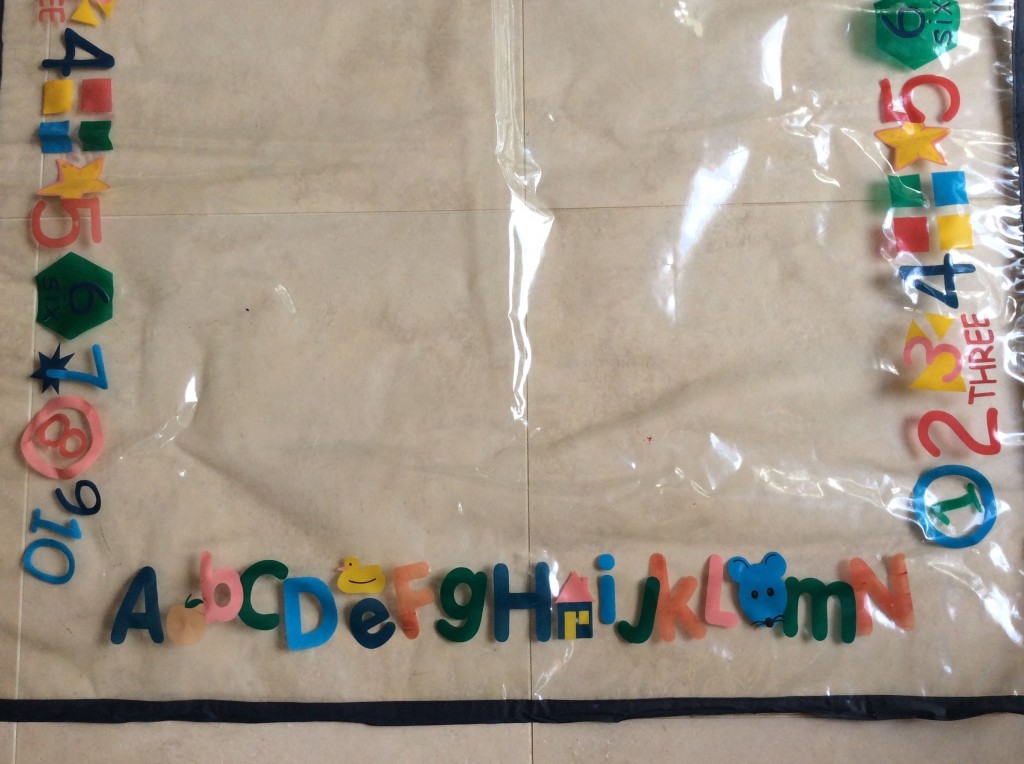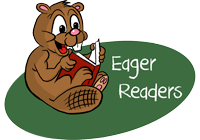There are many approaches to teaching the alphabet. My approach aims to make it a meaningful and enjoyable experience for the toddler or preschooler and the parent. There are actually different aspects to learning the alphabet, and all of them are important, so encourage all of the following– knowing the names of the letters, knowing the sounds of the letters, and knowing words that start with the letters.
WHERE TO START?
1. Teach your child the ABC song, and sing it often. It’s incredibly quick and easy, and you can do this as early as birth. It will imprint the names of the letters in your child’s brain.
2. Make sure there are letters in at least a few different places in your home. Is your child’s environment filled with letters of the alphabet? Your child needs to see letters in order to learn them! Some suggestions are:
- Magnetic letters on your fridge or a whiteboard (pictured below)
- An ABC chart (readily available from newsagents, book stores, office supply stores)
- Foam bath letters (I found mine at Target)
- Foam alphabet mat (pictured)
- Alphabet puzzles (pictured above)
- Alphabet books
- Anything else that has letters on it – for example, my son first took an interest in the letters on the plastic mat I placed under his high chair to prevent baby food from getting on the carpet! (pictured)

-
OK, NOW WHAT?
To a toddler, letters are meaningless. They are just lines and curves in their environment. You give letters meaning by connecting them to something important in your child’s life. Therefore, it is easiest to associate letters with family members and friends – the important people in your child’s life. Who is the most important person to him? Himself! So…..
3. Start with the first letter of your child’s name.
Even before children can talk, you can teach your child to recognise letters. In my son’s case, I pointed to the letter K and said, “This is your letter. It’s a K. k-k-Kaelen” Every time we came across a K in our day, I would repeat that. Even though he could only say a few words, he could find and point to his letter when I asked him, “Where is your letter?” Make sure you use an excited voice! You can also say: “Can you find/point to/show me the __ letter?“, “What’s that letter?“,”Whose letter is that?”

4. M & D
The next obvious letters to teach for most people are M & D, for Mummy and Daddy, the next most meaningful people in your child’s life. (Choose someone or something else if these are appropriate for your child.) Introduce the letters in the same way, pointing them out when you see them: “Look! There’s Mummy’s letter, M, mmm…Mummy!”
Your child may not refer to the letter by its name, but by the person instead. This is fine. Just keep pairing the letter name with it. For example:
Child: “There’s the Daddy letter!” You: “Yes, I see Daddy’s letter, too! It’s a D.”
5. Give it some time.
Give your child some time to learn these letters, especially if he’s a toddler. Continue to point them out anywhere you see them– even when you’re out walking, waiting at a stoplight, or at the shops. There are lots of signs that use large letters. Pretty soon your child will be noticing letters all over the place, especially really big ones like the golden arches ‘M’ of McDonald’s. Although my son knows the name and sound of the letter M, he still calls McDonald’s “the Mummy letter” because of its sign!
6. Add new letters one or two at a time.
Add letters of siblings, friends, animals, anything that your child is interested in or loves! Each child is different. Some children will learn more quickly than others, and preschoolers should be able to handle a few letters at a time. You know your child best so judge accordingly. It’s okay if your child doesn’t know all the letters of the alphabet. However, he should be able to know most or all of them before he goes to school if you introduce them in this way.
What about lower case letters? Capital letters are easier to learn than lower case letters. Lots of print in our world is written in capitals, as are lots of children’s early literacy games and toys. You can choose to teach them together with their corresponding capitals, or not. (I found it easier to teach my son the capitals first, when he was a toddler, then I added the lower case recognition when he was a bit older. Regardless, it is easiest to start with the lower case letters in your child’s name. Just remember, it usually takes longer to learn lower case letters, and it’s normal for some to be confused well into school age, such as b, d, p, q.
Remember, learning the alphabet should be a fun experience for your child! You don’t have to sit down and have structured ‘alphabet time’ for half an hour a day. It’s better to keep your eyes open for authentic opportunities to teach and practice letter learning, wherever you might be. Our little ones only have a few minutes’ attention span and that’s all it takes–a few minutes at a time, a few times a day…
